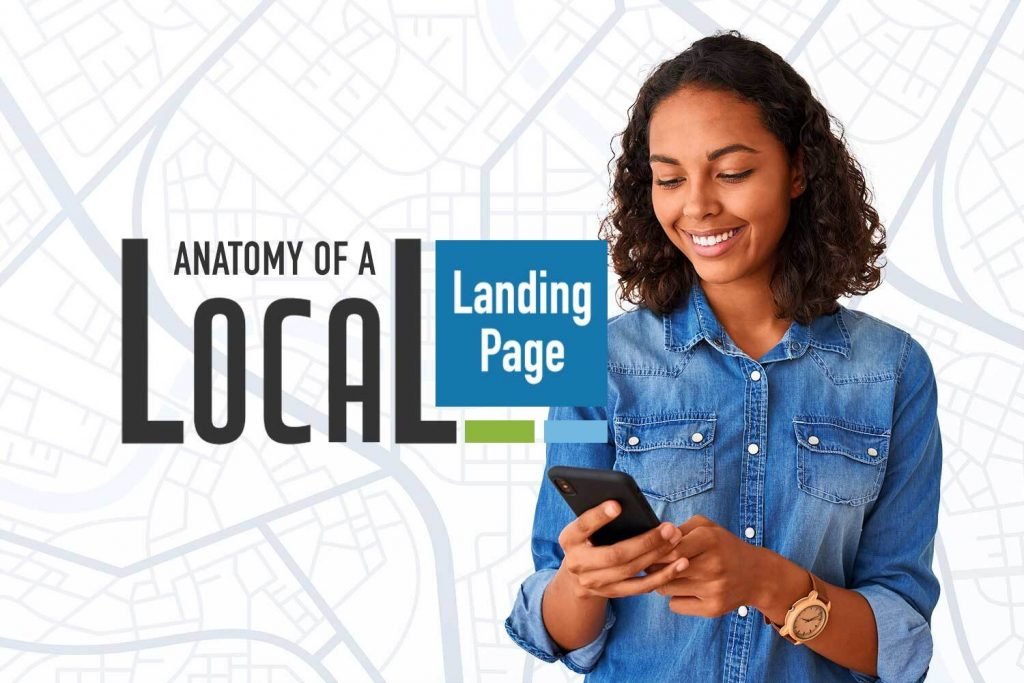
In the world of digital marketing, creating effective content for local landing pages is vital for businesses targeting specific geographic areas. Local Landing Pages for SEO: Local landing pages help businesses rank higher in local search results, attract targeted traffic, and convert visitors into customers. Whether you’re a small business owner in Tanzania or a digital marketer working with clients in different locations, understanding how to create optimized content for local landing pages is crucial for success.
This comprehensive guide will walk you through the process of creating content for local landing pages that not only boosts your SEO performance but also resonates with your local audience.

Local landing pages are specific pages on your website that are tailored to target a particular geographic area. These pages are designed to attract visitors searching for products or services in that area and provide them with relevant information that meets their needs.
Local landing pages are critical for SEO because they help search engines understand the relevance of your business to a specific location. By optimizing these pages with local keywords, content, and other SEO elements, you can improve your chances of appearing in local search results.
Before you start creating content for your local landing pages, it’s essential to conduct keyword research to identify the terms and phrases your target audience is using to find businesses like yours in their area.
Once you’ve identified potential local keywords, analyze their search volume and competition level. Focus on keywords with a decent search volume and low to moderate competition, as these will give you a better chance of ranking in local search results.
Once you’ve selected your local keywords, strategically incorporate them into your content. This includes your page title, meta description, headers, and body text. However, avoid keyword stuffing, as this can negatively impact your SEO performance.
To create content that resonates with your local audience, it’s essential to understand their needs, preferences, and pain points. Conduct market research to gather insights into your target demographic, including their interests, challenges, and buying behavior.
Your local landing pages should provide valuable information that addresses the needs of your audience. Whether you’re offering a product, service, or information, ensure that your content is clear, concise, and engaging.
Incorporating local stories, testimonials, and case studies into your content can help build trust and credibility with your audience. Share success stories from local customers or highlight your involvement in the community.

Your title tag and meta description are the first things users see in search engine results. Optimize these elements by including your primary local keyword and ensuring they are compelling and relevant to the content of the page.
Use header tags (H1, H2, H3) to structure your content and make it easier for users and search engines to navigate. Include your local keywords in your headers to signal the relevance of your content to search engines.
Create a clean and descriptive URL structure that includes your local keyword. A well-structured URL can improve your click-through rate (CTR) and help search engines understand the content of your page.
Internal linking is an effective way to guide users through your website and help search engines understand the relationship between your pages. Link to other relevant local landing pages or blog posts within your content.
Your business’s name, address, and phone number (NAP) should be consistent across your website and all online platforms. This consistency is crucial for local SEO, as search engines use this information to verify your business’s location.
Adding a Google Map to your local landing page helps users easily find your location and enhances your local SEO. Embedding a map also signals to search engines that your business is relevant to the area you’re targeting.
Schema markup is a type of structured data that helps search engines understand the content of your website. Adding local schema markup to your landing pages can improve your chances of appearing in local search results and enhance your visibility in rich snippets.
With the increasing use of mobile devices for local searches, ensuring your local landing pages are mobile-friendly is essential. A responsive design that adapts to different screen sizes provides a better user experience and improves your local SEO.
Page speed is a crucial factor for both user experience and SEO. Slow-loading pages can lead to higher bounce rates and lower search rankings, so it’s essential to optimize your local landing pages for fast load times.
Your local landing pages should include clear and compelling calls-to-action that guide users toward the desired action, whether it’s contacting your business, filling out a form, or making a purchase.
In addition to your local landing pages, consider creating blog posts that focus on local events, news, or topics relevant to your audience. These posts can attract local traffic and enhance your overall SEO strategy.
Incorporating local images and videos into your content can make your local landing pages more engaging and relevant. Visual content that features recognizable landmarks, local customers, or events can help connect with your audience on a personal level.
Showcase local case studies or success stories on your landing pages to demonstrate the impact of your products or services in the local community. This content builds credibility and encourages potential customers to choose your business.
Collaborating with other local businesses for cross-promotion or partnerships can lead to valuable backlinks to your local landing pages. These backlinks signal to search engines that your business is a trusted and relevant source of information in the local area.
Getting coverage from local media outlets or influencers can also generate high-quality backlinks. Reach out to local newspapers, blogs, or social media influencers to feature your business or share your content.
Submitting your business to local directories is another effective way to build backlinks and improve your local SEO. Make sure your business information is consistent across all listings to avoid confusion and potential SEO penalties.
Google Analytics is a powerful tool for monitoring the performance of your local landing pages. Track metrics such as page views, bounce rates, and conversion rates to assess how well your pages are performing and identify areas for improvement.
Monitor the rankings of your local keywords using tools like Ahrefs, SEMrush, or Google Search Console. Regularly check your keyword positions to see how your local landing pages are performing in search results.
Collect feedback from users who visit your local landing pages to understand their experience and satisfaction. This feedback can provide valuable insights into what’s working and what needs improvement.
SEO is an ongoing process, and keeping your local landing pages up to date is essential for maintaining their effectiveness. Regularly review and update your content to ensure it remains relevant and accurate.
Stay informed about the latest SEO trends and algorithm updates to ensure your local landing pages remain optimized. Adapt your strategies as needed to stay ahead of the competition and maintain your rankings.
Experiment with different content formats, layouts, and calls-to-action to see what resonates best with your audience. A/B testing can help you determine which elements of your local landing pages are most effective.
Creating optimized content for local landing pages is a critical component of a successful local SEO strategy. By understanding your local audience, conducting thorough keyword research, and implementing best practices for on-page optimization, you can create landing pages that not only rank well in local search results but also engage and convert your target audience.
At Providence Digital, we specialize in helping businesses create effective local landing pages that drive results. Whether you’re looking to improve your local SEO, attract more customers, or enhance your online presence, our team is here to help.
Take the first step towards improving your local SEO strategy today. Contact us to learn more about how we can help you create powerful local landing pages that boost your visibility and grow your business.